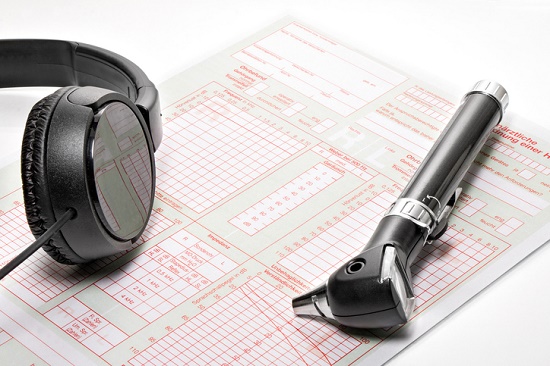Your First Hearing Test – What to Expect

The hearing exam truly is the easy part. The tricky part is acknowledging your hearing loss and actually booking the hearing test in the first place.
You have probably read the stats by now: 48 million individuals in the US have hearing loss but only a small fraction actually do anything about it, and only 20 percent of people who would reap benefits from hearing aids actually make use of them.
So if you’ve already arranged your hearing test, congrats, you’ve already conquered the greatest obstacle to healthier hearing.
The hearing exam, as you’ll discover, is a simple and easy, non-invasive process that will confirm the level of your hearing loss to help establish the most suitable method of treatment.
After you first arrive at the office, you’ll start by submitting some paperwork. Then, you’ll meet with your hearing care provider to go over your hearing health history.
Your Hearing Health History
Your hearing loss, if present, can be triggered by direct exposure to loud sound, the normal aging process, or by an underlying ailment. You’ll want to rule out any underlying conditions prior to moving on to the actual hearing exam.
If you have an earwax impaction, as an example, you may very well be hearing better within minutes shortly after a professional cleaning. The existence of any other ailments will be analyzed and the appropriate referral made, if necessary.
After reviewing your basic medical history, you’ll go over your subjection to loud sounds, your hearing loss symptoms, and what you would like to achieve with better hearing.
It’s imperative to determine possible causes, how symptoms are influencing your life, and how better hearing will improve your life, which is all things considered the entire point. Be wary of the practitioner that doesn’t seem to really care about the reasons why you want to enhance your hearing to begin with.
Testing Your Hearing
There’s one more step prior to starting the hearing test: the visual investigation of the ear with an instrument known as an otoscope. This will help in ruling out any problems with the ear canal, the eardrum, or the excessive buildup of earwax.
Next, you’ll be accompanied to a sound-treated room with your hearing care provider. You’ll be required to wear headphones, and the specialist will start to play you some sounds.
You’ll be presented with various sounds at multiple frequencies, and you’ll be requested to identify the quietest sounds you can hear at each pitch. This is labeled your hearing threshold, and the hearing care professional will record these values on a diagram called an audiogram.
The hearing exam may also entail speech testing, where you’ll be instructed to repeat the words delivered to you. Various types of words, delivered at different volumes with and without background noise, will be introduced. This will help ascertain if hearing aids can help you with speech comprehension.
At the conclusion of the testing, your hearing care professional will review the results with you.
Reviewing Your Hearing Test Results
Referring to your audiogram, your hearing care provider will now talk about your hearing in both ears. Contingent on the results, your hearing will be characterized as normal or as exhibiting mild, moderate, severe, or profound hearing loss.
If a hearing loss is present, the next step is discussing your treatment options. Given that there are no current medical or surgical treatments to repair hearing damage, this means examining your hearing aid options.
Present hearing aids come in a whole range of shapes, sizes, and colors, at different price ranges with several advanced features. In picking out your hearing aids, it’s essential to work with an expert hearing care professional for three main reasons:
- They can help you find the best hearing aid model to satisfy all of your objectives.
- They can help you determine the advanced functions you need—as well as with the ones you don’t—at a price that works with your budget.
- They can program your new hearing aids to amplify only the sounds you have difficulty hearing—ascertained by the hearing test—ensuring optimal sound quality.
And that’s it, a fast, easy procedure in exchange for a lifetime of better hearing. We’d say that’s a very good deal.
We look forward to seeing you!
